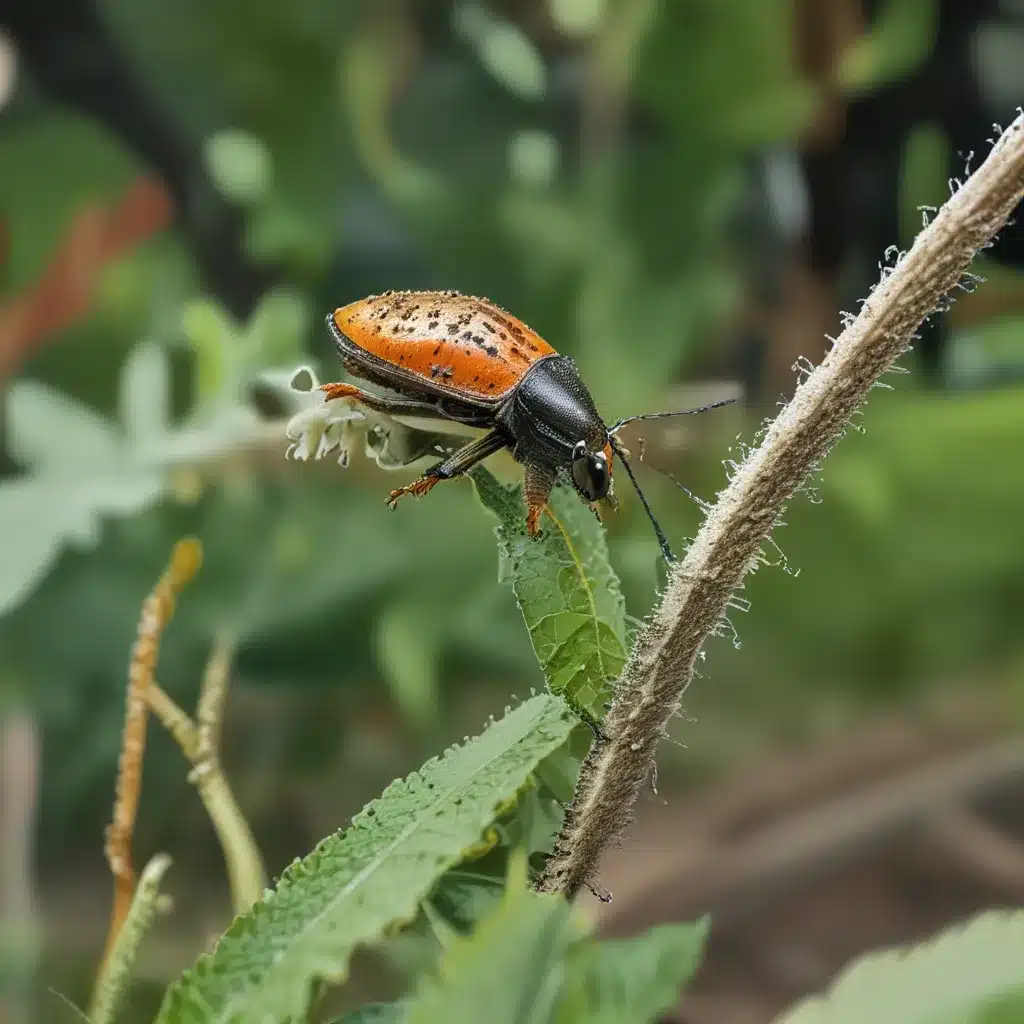
Discovering the Wonders of Beneficial Bugs
As I stroll through my lush, verdant garden, I’m struck by the sheer abundance of life buzzing and crawling all around me. It’s a veritable insect metropolis – a dazzling display of nature’s ingenious pest control system. And you know what? I wouldn’t have it any other way.
You see, I’m a firm believer that the key to a thriving, pesticide-free garden lies in embracing the very creatures that many consider to be the enemy. These so-called “pests” are actually our allies, our secret weapons in the war against the destructive forces that threaten the health and vitality of our precious plants.
Inviting the Beneficial Brigade
When I first started my community-supported agriculture (CSA) journey here at Thornapplepple CSA, I’ll admit, I was a bit hesitant about the idea of purposefully welcoming insects into my garden. After all, don’t they just munch away at our hard-earned produce, leaving a trail of destruction in their wake?
But as I dove deeper into the world of sustainable gardening, I quickly realized that there’s far more to these little critters than meets the eye. In fact, many of them are our greatest assets when it comes to maintaining a thriving, pest-resistant plot.
Unsung Heroes: The Beneficial Bug Lineup
Let me introduce you to some of the unsung heroes of the insect world – the beneficial bugs that can do wonders for your garden.
Ladybugs: Nature’s Aphid Assassins
First up, we have the ever-popular ladybug. These cheerful, spotted creatures are true champions in the battle against aphids, mealybugs, and other plant-munching pests. A single ladybug can gobble up hundreds of aphids in its lifetime, making it an absolute essential for any CSA garden.
As Conscious Food puts it, our journey towards environmental sustainability is more than just a series of practices – it’s a story of dedication, innovation, and a deep respect for nature. And ladybugs are the perfect embodiment of that ethos.
Lacewings: Nature’s Voracious Predators
Next, we have the lacewing, a delicate-looking insect that packs a serious punch when it comes to pest control. In their larval stage, lacewings are true predators, feeding on aphids, mealybugs, thrips, and even small caterpillars. These green guardians are a sight to behold as they stalk their prey, their long, slender bodies moving with a graceful, almost balletic, precision.
Parasitic Wasps: Natures’ Covert Killers
And let’s not forget the often-maligned (but incredibly helpful) parasitic wasps. These tiny, stinger-wielding insects may seem intimidating, but they’re actually the ultimate pest-control ninjas. They lay their eggs inside the bodies of caterpillars, aphids, and other harmful bugs, effectively neutralizing the threat from within.
As the team at Stone Pier Press reminds us, our story as gardeners begins with the soil – the very foundation of our farms. By enriching the soil with natural fertilizers, we can foster healthy plant growth without the need for harmful chemicals. And that’s where these parasitic wasps come in, working tirelessly to keep our plants happy and healthy.
Syrphid Flies: Nature’s Pollinators and Pest Patrollers
Another remarkable beneficial bug is the syrphid fly, also known as the hoverfly. These colorful, bee-mimicking creatures are not only essential pollinators, but they also play a vital role in controlling aphid populations. In their larval stage, syrphid flies feast on aphids, making them a welcome addition to any CSA garden.
Ground Beetles: Nature’s Subterranean Sentinels
Last but not least, we have the unsung heroes of the soil – the ground beetles. These nocturnal predators prowl the earth, hunting down a wide range of garden pests, including slugs, snails, and even weed seeds. By burrowing deep into the soil, they create pathways for air and water, ensuring the health and vitality of the very foundation of our gardens.
Cultivating a Beneficial Bug Oasis
Now that you’ve met some of the key players in the beneficial bug lineup, you might be wondering, “How can I invite these amazing creatures into my own garden?”
Embrace the Diversity
The first step is to cultivate a diverse, vibrant ecosystem in your garden. Different beneficial bugs thrive in different environments, so the more variety you can introduce, the better. Plant a wide range of native flowers, shrubs, and herbs to provide food and shelter for a diverse array of beneficial insects.
As the team at Conscious Food reminds us, our journey towards environmental sustainability is rooted in a deep respect for nature. By embracing the natural cycles and rhythms of the land, we can create a harmonious, self-sustaining oasis that benefits both us and the creatures that call it home.
Ditch the Chemicals
Another crucial step is to ditch the harmful chemicals and pesticides. These not only kill off the beneficial bugs we’re trying to attract, but they also wreak havoc on the delicate balance of the ecosystem. Instead, opt for natural, organic pest control methods, such as hand-picking pests, using row covers, and encouraging the presence of predatory insects.
Provide Water and Shelter
Finally, make sure to provide ample water sources and shelters for your beneficial bugs. A simple birdbath or shallow dish of water can be a lifesaver for thirsty insects, while piles of stones, sticks, or logs can offer much-needed refuge and overwintering sites.
Embracing the Insect Invasion
As I wander through my CSA garden, I can’t help but feel a sense of awe and wonder at the incredible diversity of life that thrives all around me. These beneficial bugs, once considered mere “pests,” have become my allies, my partners in the quest for a thriving, pesticide-free plot.
So, the next time you see a ladybug, a lacewing, or even a humble ground beetle, don’t reach for the pesticide. Instead, marvel at the incredible role they play in maintaining the delicate balance of our gardens, and do your part to welcome them in. After all, as Thornapplepple CSA has taught me, the true key to a bountiful harvest lies in embracing the wonders of nature’s own pest control system.



